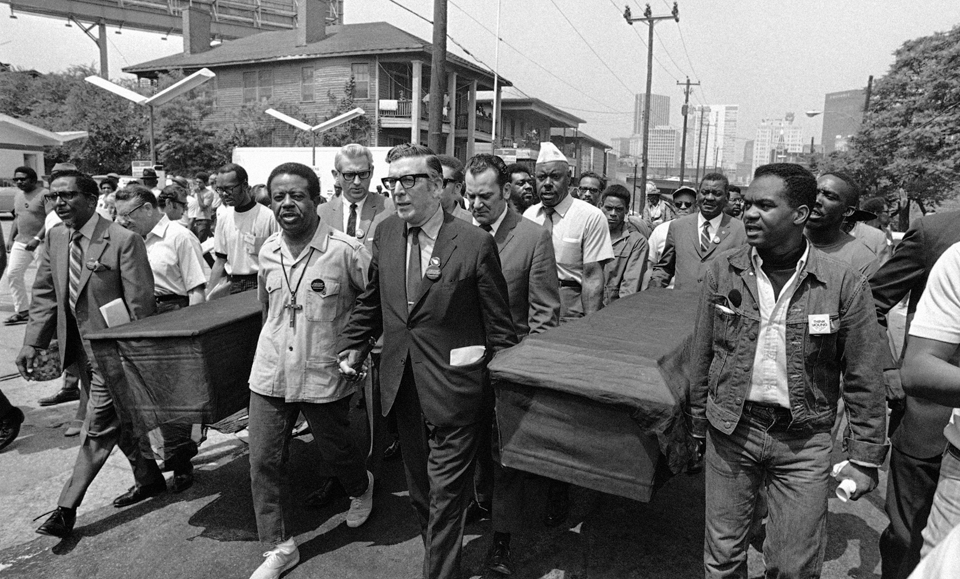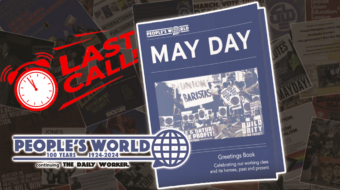
On this date in 1970, four Kent State University students were shot dead and nine wounded in Kent, Ohio, by the National Guard during a protest against the Vietnam War and the newly revealed U.S. invasion of Cambodia by the Nixon government.
The four martyrs were Allison Krause, 19 years old; Sandra Lee Scheuer, 20; Jeffrey Glenn Miller, 20; and William K. Schroeder, 19.
Many college campuses saw a spurt of protest in early May 1970 when news came out that the long-hated U.S. war against Vietnam was now spreading to neighboring countries.The public tide had turned by then. For the president to stay the course, and even expand the war, in the face of mass protests that had been going on since 1965, became an unbearable sign that free speech and peaceful protest did not seem to be effective in this country any more. Demonstrations suddenly took on more urgency.
On May 1, the Kent State protest included objects thrown at the police, bonfires, and broken windows. Leroy Satrom, the town mayor, declared a state of emergency, and asked Gov. James A. Rhodes to send in the Ohio National Guard. The National Guard arrived the next day, finding the Reserve Officer Training Corps (ROTC) building at the university in flames. No one knows who set it afire, but antiwar protestors were celebrating. The Guard released tear gas to disperse the crowd.
On May 3, approximately 1000 National Guard soldiers were on campus, breaking up continuing demonstrations with rifles and bayonets. Completely misinterpreting the moment, Gov. Rhodes heightened the tension with accusations against the protestors, stating, “They’re the worst type of people that we harbor in America. I think that we’re up against the strongest, well-trained, militant, revolutionary group that has ever assembled in America.”
The next day, a Monday, classes resumed, and so did the protests. Again the National Guard fired tear gas canisters, and some demonstrators threw them back. As the mutual antagonism between students and National Guard increased, the Guard eventually opened fire indiscriminately into the crowd. The troops fired 67 shots. Two of the students who died were actually just walking between classes.
These murders proved that the American people were serious about ending this immoral and senseless war, and that the government would stop at nothing to keep on pursuing it. Frustration over the apparent failure of protest led in short time to more radicalized and extremist forms of resistance. But the killings also inspired an ever wider swath of the American public to side with the antiwar cause. Almost every major college and university in the country canceled classes and shut down for the remainder of the academic year.
The war dragged on for five more years, although some of the passion in the protest was removed when the draft wound down and young men were no longer subject to forced enlistment in a war they despised. After 1973, with the signing of the Paris Peace Accords, Nixon tried to “Vietnamize” the war by withdrawing most U.S. troops and giving more autonomy to the corrupt and unrepresentative South Vietnamese government and military. Finally the war ended with a complete Vietnamese people’s victory on April 30, 1975.
The Kent State shootings are a long-remembered symbol of government gone amok with its own power and with fear of its own people. Neil Young’s moving song “Ohio” dealt with this tragedy.












Comments